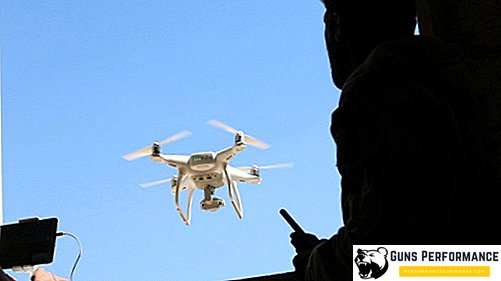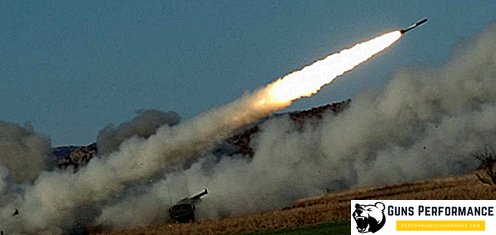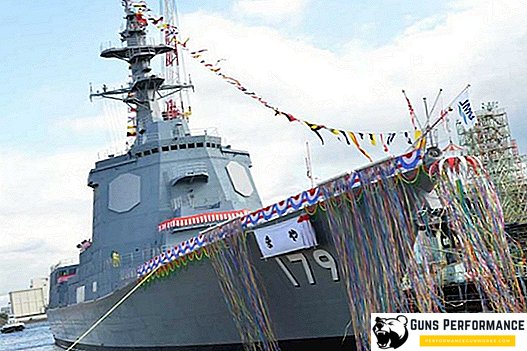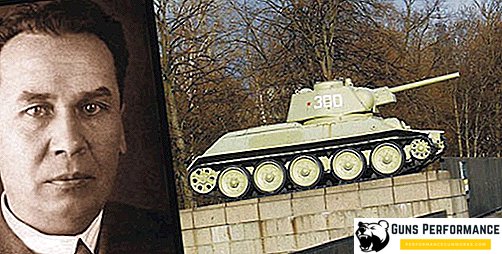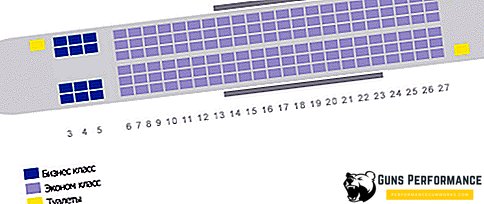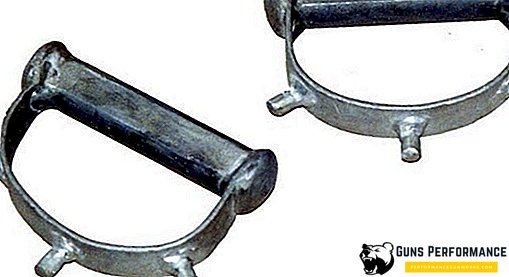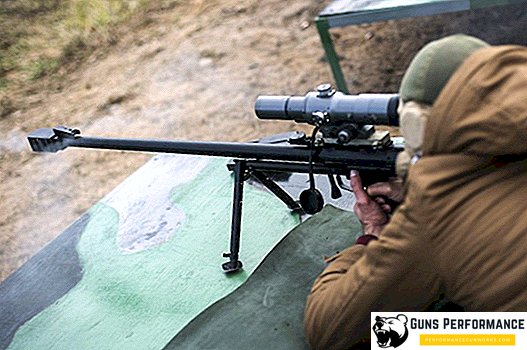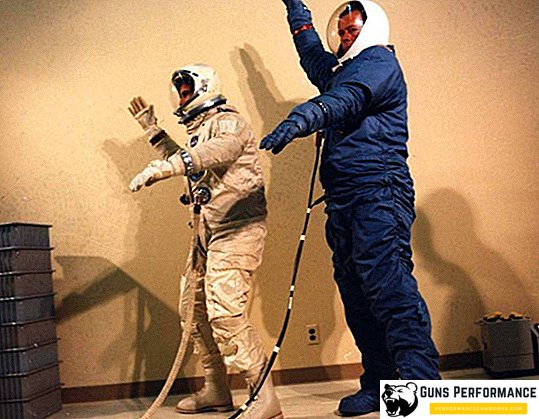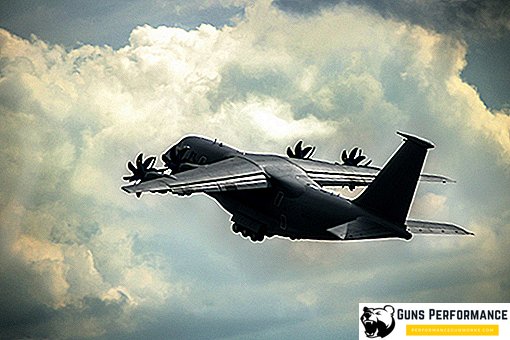
The Yak-28 is a Soviet multi-purpose jet combat aircraft created at the Yakovlev Design Bureau in the late 50s. The basis for its creation served as another machine - the Yak-26. The Yak-28 had a large number of modifications, it was used as a front-line bomber, interceptor plane, training machine, EW plane, reconnaissance aircraft. The Yak-28 was the first Soviet serial jet bomber.
The plane first flew into the sky in March 1958, the operation of the machine began in 1960 and lasted until 1994. The Yak-28 was mass-produced from 1963 to 1971, during which time 1180 combat aircraft were produced. Among the most widely produced cars was the modification of the Yak-28P. This combat aircraft was armed exclusively with the Soviet Air Force and was never exported. The Yak-28 bomber could carry a weapon with a nuclear warhead.

After the collapse of the USSR, the Yak-28 was still operated for some time by the air forces of Russia, Ukraine, Belarus and Turkmenistan, but in the mid-90s it was removed from service everywhere.
The Yak-28 never took part in hostilities, a small number of these machines were used in Afghanistan as scouts. The only case of combat use of the Yak-28 was the suppression of the rebellion, which broke out on board the BOD "Watchdog" in 1975. This uprising was headed by the deputy commander of the ship Sablin.
History of creation
The 50s – 60s of the last century became a period of rapid development of jet aircraft. At this time, military demands for new combat aircraft changed almost every few months, the reason for which was the rapid development of the engine industry. Even before the tests of the Yak-26 aircraft were completed, the Yakovlev Design Bureau designers were instructed to start developing a new jet bomber at its base.
The military needed a double front bomber with a take-off weight of 12,000–13,000 kg, a maximum afterburner speed of 1,500–1,600 km / h (1,200–1,300 km / h without its use), and a ceiling of 16–17 thousand meters. The plane was supposed to reach an altitude of 10 km in 3-3.5 minutes and have a range of 2200-2400 km at that altitude. The normal bomb load of the new car should have been 1200 kg. To protect the rear hemisphere on the plane required to install aft artillery with 23-mm cannon. The power plant of the new machine was to consist of two engines R-11-300. During the development of the aircraft received the designation Yak-129.

Alexander Sergeevich Yakovlev was very annoyed by the failure that befell him Yak-26 (he did not pass state tests), and he was very skeptical that on the basis of this unsuccessful machine he could build a new bomber with the demands put on him. However, several of the designers who worked in his submission adhered to a somewhat different opinion on this matter. One of them was Yevgeny Georgievich Adler - Deputy Yakovlev, who had previously participated in the development of such aircraft as the Yak-3RD, Yak-15 and Yak-21. He believed that the demands made by the military for a new aircraft were not too high. Having carefully analyzed the design of the Yak-26, Adler and his group concluded that the changes that need to be made to the aircraft are not so great.
The main changes concerned the design of the wing of the aircraft: it had to be raised to install more powerful and overall engines, to increase the area of the wing and to increase rigidity in the root section. In addition, the ailerons were shifted to the engine nacelles, eliminating their reverse, the shape of the wing was also changed - the rear edge was somewhat straight, and the front edge received an even greater angle. On the rear edge were installed flaps type "Fowler". Increasing the height of the wing allowed to make the bomb bay more spacious, which made it possible to expand the range of aircraft weapons, including not only aerial bombs of all possible calibers, but also torpedoes. To ensure the normal operation of engines at supersonic speeds, the design of the engine nacelle was modified. Also, some changes were made to the cockpit: the navigator's seat was made ejection and fixed, and the sight was mounted on a special folding platform, providing it with an extended eyepiece. When ejection, he shot at the guides.
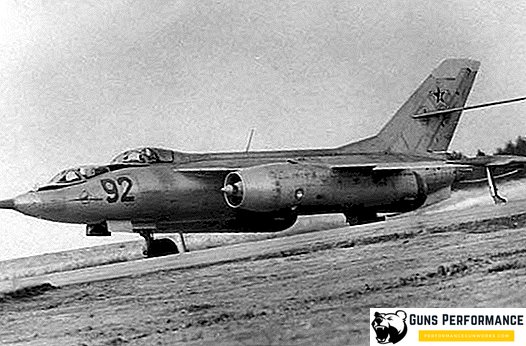
Designers had to pay attention to improving the takeoff and landing characteristics of the new bomber: to reduce its mileage, a parachute brake was used, to increase the angle of attack during takeoff, the rear rack received an automatic drawdown system. In addition, a higher location of the motors allowed us to reduce the cabling moment and made the car more stable during takeoff.
For work on the new car Adler was allocated one of the serial Yak-26, its alteration ended in early 1958. Although, the new aircraft was very similar in appearance to the Yak-26-1, which was modified in 1957, but in fact it was a completely new car. On the Yak-129 was installed engine P-11A-300, the thrust of which afterburner reached 4850 kg.
In the first flight of the Yak-129 went March 5, 1958, factory tests of the aircraft continued until October. During this period, the bomber received a new designation - the Yak-28. At NATO, he was codified as a Brewer, the Brewer. Its take-off weight increased slightly (compared to the Yak-26) and amounted to 12,885 kg. The Yak-28 could reach a height of 10 thousand meters in 3.5 minutes, but due to problems with the afterburner, it was not possible to achieve a ceiling of 17.8 thousand meters. The maximum speed of the new car was 1500 km / h. Test pilots noted good stability and controllability of the bomber. During the tests, the need to rework the front of the aircraft became obvious, and to improve the longitudinal stability, aerodynamic crests were installed in the wing root.
The attitude of the general designer Yakovlev to the new aircraft is curious. Difficult experiencing the failure of the Yak-26, initially he had little interest in the work of the design team. However, after the first reports of the flights of the Yak-28, he "remembered" about it and began to regularly send its representatives to the test site.

The second prototype aircraft received more powerful R-11AF-300 engines (thrust at 5750 kgf afterburner), new nacelles with oval-shaped air intakes. It was first bombed during a flight at supersonic speed.
Yakovlev, inspired by the first success of the aircraft, sent the car to the state tests. They took part and the third prototype, the design of which was similar to the Yak-28-2.
The tests were successfully completed, and it was decided to send the aircraft into mass production. Initially, it was limited, because the radar sight for them was still being developed and bombers were equipped only with optical ones.
Therefore, it was decided to create an intermediate modification, which was installed radar BPM-3. She was under the pilot's cabin, the station's antenna was closed with a transparent fairing. In addition, an OPB-115 optical sight was also installed on the Yak-28 aircraft. Bomber modification of the machine received the designation Yak-28B.
In 1960, based on the Yak-28, a new double-supersonic interceptor Yak-28P was developed. This aircraft was more advanced than the Su-9, which at that time was in service with the air defense forces. Yak-28P could produce missile launches at a much greater distance to the target. The layout of the Yak-28P was similar to the Yak-7, but the missiles were located not on the inside of the engine nacelle, but on the outside. The tests of the car began in 1962, but even before they were finished, the car was launched into a series.

It is curious that the Yak-28 was never put into service, although it was operated in the USSR for more than two decades.
The Yak-28B bomber was first shown to the public at large during the 1961 aviation parade in Tushino.
After the start of operation of the machine, claims began to arrive in the design bureau, the overwhelming part of which concerned the structural strength of the new aircraft — the appearance of cracks on its various elements. The general designer ordered to carry out life tests of the aircraft. They showed that most of the cracks appear in the non-force elements of the machine and did not affect its overall strength.
There were problems with moisture entering the instruments (radio semi-computations) and the autopilot, but they were quickly resolved. Much more serious was the question of "bringing to the mind" of the weapons system, in order to solve it the developers had to conduct special studies. Initially, the accuracy of supersonic bombing was so low that pilots sometimes missed not just the target, but the ground. Later it turned out that this problem was caused not so much by the characteristics and quality of the sighting equipment, as by the aerodynamic form of bombs and bombing tactics. In the end, this problem was solved and improved efficiency of the Yak-28 to the requirements of the Air Force.
The Yak-28 was fairly uncomplicated in piloting (although it had some nuances), had significant thrust-to-weight ratio, good maneuverability, and an excellent combat load for its time. With the development of the pilots disappeared distrust of this machine. Units armed with the Yak-28, located throughout the USSR, in addition, this bomber was in operation in the North, West and South groups of Soviet troops.

In total, about 350 attack aircraft of the Yak-28 were sent to the combat units. Only in the mid-1970s, he was replaced by a more sophisticated front-line bomber Su-24, the next-generation vehicle, which is still in service with the Russian army. Yak-28 was an important milestone in the development of domestic military aircraft, the history of the creation of this aircraft is unique. It is hard to remember another example, when two production aircraft with completely different characteristics and purpose were developed on the basis of one glider.
Modifications
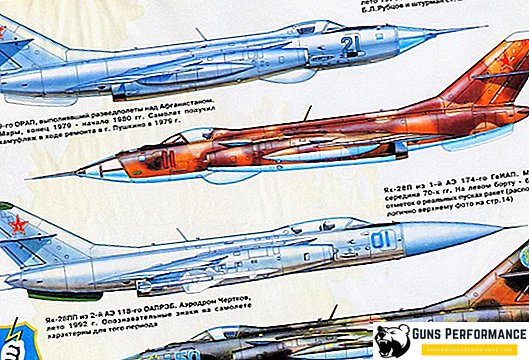
Based on the Yak-28 aircraft, several modifications were developed, most of which were mass-produced:
- Yak-28L. Modification, equipped with radio command guidance system DBS-2S "Lotos".
- Yak-28P. Interceptor fighter, developed on the basis of the basic modification.
- Yak-28U. Training modification of the aircraft, according to the NATO codification - Maestro.
- Yak-28B. Bomber aircraft equipped with the radar "Lotus" and "Initiative".
- Yak-28I. Modification with the weapon control system consisting of the Initiative-2 radar, the AP-28K autopilot and the OPB-116 optical sight.
- Yak-28N. A modification of the vehicle, equipped with the K-28P weapon system, with two Kh-28 anti-radar missiles and control equipment.
- Yak-28R. A reconnaissance aircraft based on the base modification.
- Yak-28RR. The reconnaissance aircraft of the radiation situation.
- Yak-28PP. Aircraft designed for jamming.
- Yak-28URP. Experienced aircraft with solid fuel boosters to increase the maximum speed.
Description of construction
The Yak-28 is made according to the normal aerodynamic design; it is a cantilevered, high-winged, swept-shaped wing and a four-bearing bicycle-type chassis. Glider aircraft made entirely of aluminum alloys.
The fuselage of the Yak-28 is a semi-monocoque circular cross section, turning into an oval in the tail section. In front of the car is the cockpit and compartment for the front landing gear. In the central part of the aircraft is a center section, bomb bay, rear landing gear compartment and fuel tanks. In the rear of the bomber is a brake parachute compartment, as well as part of the instrumentation equipment of the machine. Behind the cockpit is a gargrot, which passes into forkil. It contains the rudder steering, electrical wiring and piping.
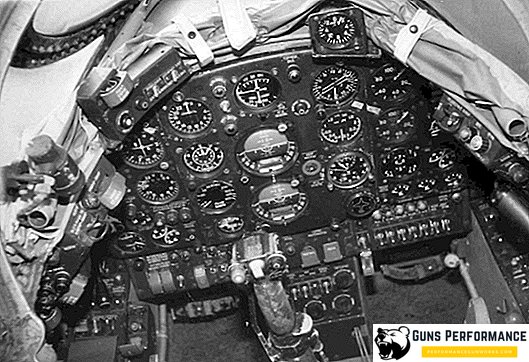
The Yak-28 has a high wing of significant sweep with three spars. It consists of a center section, which forms a single unit with the fuselage, and two consoles. The wing is equipped with ailerons and flaps with weight and aerodynamic compensation. Between the engine nacelle and fuselage machines installed aerodynamic ridges.
The tail of the aircraft consists of a two-spar keel with a rudder and a adjustable stabilizer with elevators located on it. The stabilizer also has a two-spar design and a sweep of 55 °.
The Yak-28 has a four-bearing retractable bicycle-type chassis, consisting of the nose and rear two-wheel main struts and two one-wheel wing supports. The main supports are retracted into the fuselage niches, and the wing supports are fixed into special fairings on the wing tips. Chassis supports are equipped with nitrogen-hydraulic shock absorbers, to reduce the length of the vehicle’s run, a brake parachute is used, the compartment of which is located in the tail section of the aircraft.
The power plant of the aircraft included two engines TRD R11AF2-300 installed in nacelles under the wing consoles. At the entrance of each of the engine nacelle there was an adjustable cone, the engines are equipped with automatic starting devices and an anti-icing system. The aircraft’s fuel system consisted of six tanks located in the fuselage. Their total capacity was 5275 liters. The Yak-28 could hang additional tanks under the wing consoles.
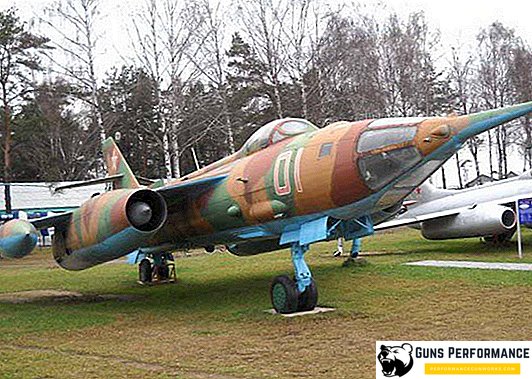
The control system of the aircraft for roll and pitch - booster, and in the channel yaw - mechanical (hard thrust). Yak-28 was equipped with autopilot and automatic course.
The bomber’s hydraulic system consisted of primary and redundant subsystems. It was used to control ailerons, elevators, stabilizer and engine cones, as well as the release and cleaning of the chassis, closing and opening of the bomb bay flaps.
The Yak-28 pneumatic system controlled the turn of the front landing gear, as well as braking the wheels and releasing a parachute.
The Yak-28 was capable of carrying bombs of caliber from 100 kg to 3 tons. The aircraft could take on board and ammunition with a nuclear warhead, for them the bomb compartment was equipped with a thermoregulation system.
Exploitation
The Yak-28 was actively exploited until about the mid-1970s, then newer and more advanced aircraft began to replace it. Although, the car continued to be used until the beginning of the 90s (1992 - in Russia, 1994 - in Ukraine).
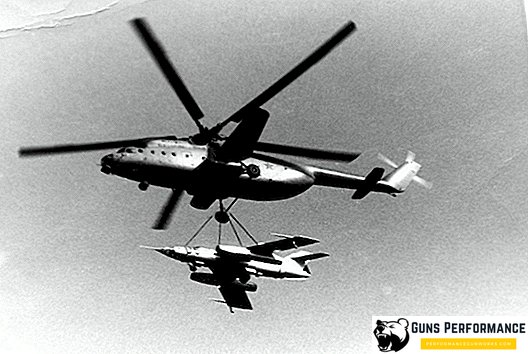
This aircraft did not take part in hostilities and was not exported. An interesting fact is that, despite the large number of cars produced and decades of active use, the Yak-28 was never officially adopted.
The Yak-28 was used as a reconnaissance aircraft in Afghanistan, and this aircraft also carried out reconnaissance flights on the borders of the countries of Eastern Europe that are part of the socialist bloc.
The combat use of the Yak-28 as a bomber is somewhat unusual: these aircraft were used during the suppression of the insurrection at the BOD Watchdog in the Baltic Sea. Much has been written about this story, but there are also little-known facts. In total there were several groups of Yak-28 aircraft, each of them was given the task: to find, and if you want to destroy the rebellious ship. Due to the harsh weather conditions, only one aircraft managed to do this; he dropped bombs near the ship, which made him stop the course. Another group of bombers accidentally bombed the Soviet cargo ship, and only thanks to a lucky chance no one was hurt. Another Yak-28 took the boat of the Red Banner Baltic Fleet Commander for the desired purpose and had already started to attack, but at the last moment the crew realized their mistake.
Another episode related to the Yak-28 is the feat of the pilots, about which the song "The Great Sky" was written later. Pilots, captain Boris Kapustin and lieutenant Yuri Yanov, with the price of their own lives, took the malfunctioning plane - engines refused it - from the residential areas of West Berlin. Posthumously, they were awarded orders of the Red Banner. The British carefully studied the wreckage of the aircraft, especially they were interested in the newest at that time radar "Orel-D".
In operation, the Yak-28 was quite complex and was accompanied by a large number of failures, despite the small number of complex electronics on board. For pilots piloting the Yak-28, there were many prohibitions, in particular on this plane it was impossible to perform aerobatics. The afterburner mode was often accompanied by engine raznetyag, which often led to disaster. In order to eliminate this defect, a course machine was installed on the Yak-28, which compensated for the difference in weight by deflecting the rudder. However, the operation of the machine also was not always reliable.
The fuselage was quite weak, it was deformed at full load, after which it was impossible to close the cockpit canopy. Therefore, the pilots were first planted in the cockpit, closed the lantern, and then carried out the loading of ammunition and refueling.
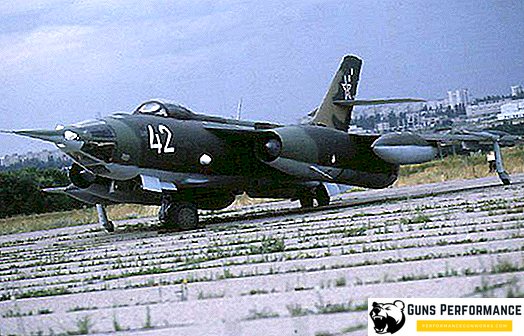
Specifications
The following are the main LTH Yak-28P:
- wing span, m - 11.78;
- height, m - 4.3;
- length, m - 21.7;
- weight, kg - 16060;
- power plant - 2 TRD R11AF2-300;
- тяга нефорсированная, кгс - 2 х 6100;
- Max. скорость, км/ч - 1840;
- дальность с ПТБ, км - 2700;
- практический потолок, м - 16000;
- crew, people - 2.


